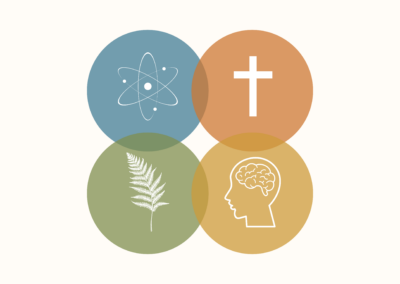Dr. Nicola Hoggard Creegan
Advent, the Nicene Creed and Science
Seventeen hundred years ago, in 325, at really the beginning of time, or at least near the beginning of the Church, bishops from over the missionized world were called to Nicaea by the Emperor Constantine, newly converted to Christianity. Now, Councils these days turn out summary statements and everyone forgets. For some reason, nobody forgot this one. There was a further distillation of its essence at Constantinople in 385 and Chalcedon in 451. We still say this creed in many Anglican and liturgical churches today. It stands as the last time we all agreed. Except for the dissenters, the Aryans, and the heretics.
There is plenty to disagree about. It can be seen as patriarchal, triumphalist, didactic, exclusionary, politically motivated, and much more. But it is also an extraordinary document, a summary statement so sparse and so beautiful we can only wonder at its brevity and form.
Imagine the excitement of being the first people in the world to talk about the puzzle of the divinity and humanity of Christ, his origins, where he is now, where he has come from, and how it all relates to us. By all accounts, it was not only the scholar-bishops who thought about it, but the populace at large as well. You wouldn’t get very far venturing this as a conversation piece in a café today.
They thought they had the Holy Spirit on their side. Did they? Now we wonder, what if the Aryans had won, those who thought Jesus was of a similar substance to the Source/Father, still deity, but lesser? Why were they discussing a point of metaphysics now long forgotten in the public square, and never discussed by Jesus, or by anybody in his day: is Christ of similar or equivalent substance with the Father? Does the consensus of any group of Church authorities that meets together and prays always discern the truth? Surely truth, authority, and power do not go together. Especially when considering things like the fate of a young unknown virgin in a private meeting with an angel, and a man who walked the earth, worked miracles and healings, who defied death. Surely none of that can be decided by a Council. But the Council and its Creed is of interest, abiding interest nevertheless.
I believe in God, the Father Almighty, Maker of Heaven and Earth. How easily they link the One God to the creation, to the earth, to being the Creator; thereafter, linking the discourse about earth and the dialogue about God and Christ together, thereafter giving an affirmation of all discourse about and of the earth in the context of Christ. We might imagine here the Mausoleum of Galla Placida, from the fifth century, Northern Italy, with its swirling stars, astronomical images and in its midst the Good Shepherd and the sheep and the cross. Creation and divinity, and the mystery of Christ belong together.
And of all that is, seen and unseen. How sweeping and magisterial is that statement. Some things are seen. Some are not. Humans have always known that. The unseen. Were they imagining in their bishops’ thoughts the secret workings of Mary’s life and pregnancy, the stories of the risen Lord, the miracles and healings, the secret nature of Christ, angels, seraphim and cherubim, or powers and principalities? We don’t know. The silence and spareness are eloquent. Now we know about forces, and fields and about all the cosmos beyond the dome of our sky, and we quiver at the way the unseen keeps being filled out further and further, deeper and deeper. The unseen has a quality, a structure, a life, a soul. A quark. Is a quark unseen, or is it seen? A mitochondria? The Pillars of Creation? A number? Is 1 seen or unseen?
We believe in one lord, Jesus Christ, the only Son of God,
Eternally begotten of the Father, God from God, Light from Light,
True God from True God, begotten not made
Images of the light, emitted and begotten of the Sun, seemingly forever. The closest they can get to saying there is direction but not equivalence, separation but identity. Seeing this equivalence everywhere. Traces of the Trinity. Instantiated paradox. Light from Light. God from God. Begotten, not made.
Until the end
Of one substance with the Father. That’s what all this hangs upon. The reason for the Creed in the first place. This is the resounding bit. The blatant statement opens up the possibility of it being otherwise. We imagine Jesus as a demiurge, a God of similar substance to God. We imagine Jesus adopted, really human, but having the status of a God, by decree, by covenant. So many possibilities, even in the seeming exclusion of them all. But if one substance, can he also be begotten? Begotten is derived. This bit will never be resolved. Hints of whakapapa, true light from true light, leading us back by words –that ‘from’ –to the source.
And if we were to delve into mathematical forms, they might help as well. Functions translate one field to another, maintaining some of the structure and symmetry, but not identity. One star system maintains itself only in the larger community of the galaxy and so on outwards. Inwards, there is a community in every cell, and every cell translates itself to the body. Begotten. Not made. One substance, or maybe not, listening to the echoes of the heretics.
Because through him all things were made. Like Wisdom, she was there with God in the Beginning, before all things were made. The linking of creation again, with the being of Jesus as well as God. Saviour and Creator. Creator and Saviour. We keep coming back to this. And this man, Jesus only gone a few hundred years, was also the creator. That is a huge idea. Enough to keep one going a lifetime.
For us humans and our salvation he came down from heaven.
He pre-existed. Now we would say, as part of the trinity. One of those translation ideas again. The being of humans on this planet affected the being of God. Now not up in heaven but down on earth. Do all humans have a pre-existence? Or only God/Christ? Surely it is possible though if Christ has a pre-existence, that so do we?
Down from heaven. Christmas. The Incarnation. The being of God with us.
By the power of the Holy Spirit, he became incarnate of the Virgin Mary and was made man.
But was that an adoption, or was Jesus half man and half god? Did the Holy Spirit move in the chosen child, or did the Holy Spirit make the child? Were there other Marys who said no?
Now we are burdened with knowledge of chromosomes. Did the Holy Spirit alter the chromosomes, or decree that one gamete would be Christ? Or did Mary fall into pregnancy as so many women have through the ages? And then this perfectly ordinary pregnancy became something else –The Holy Spirit come over you. God’s power will overshadow you. Should we pray to be overshadowed by God? Ot is that too terrifying a thought.
And the Council. There are always so many mixed motives for calling a Council, then and now. The Emperor was new to this. He wanted consensus. However, as now, it was believed that there was an absolutely true way of speaking about Christ. At the end of the Creed were anathemas. But those who say Before then he was not, or before being born he was not…these the Catholic Church anathematizes. The stakes were SO high. Forever lost. Damned. Excommunicated. That aspect of the Creed is terrifying, and it remains hidden, never spoken out loud.
The bishops are now a part of the Community of Saints, as are the Aryans and heretics. Their Creed still lives. The questions still tantalise us. They are translated and transformed by their new scientific fields and discourse. As we enter Advent, we still want to ponder these questions. We still resonate with the grammar. Come Holy Spirit. Come Lord Jesus. Come, Seen and Unseen.



